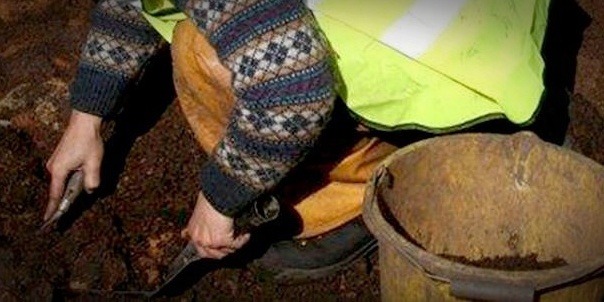Workers have made a startling discovery that may prove Dundee’s “new” cemetery has in fact been a burial ground for over 3,000 years.
A field at Drumsturdy is being developed into a new North East Cemetery, but work in one area has shuddered to a halt after a construction worker uncovered an ancient grave complete with skeletal remains.
A digger was preparing ground for a new path on Thursday afternoon when, about a metre from the surface, the workman found what is understood to be a Bronze Age kist a prehistoric burial chamber. It is made of stone and measures about six feet by four feet, and inside lay human bones.
He immediately called the site manager, who alerted the city council. They in turn called in the police.
Dundee University professor Sue Black, one of the UK’s leading forensic anthropologists and a world authority on the analysis of adult and juvenile remains, was called in to give her expert opinion.
After it was confirmed that the grave appears to be ancient, the find was passed on for investigation by archaeologists.
Dundee City Council discussed the matter with Historic Scotland and said: ”During development work on the new North East Cemetery at West Pitkerro, workers exposed human remains. After inspection by the police and forensic archaeologists it was determined that these remains are a burial from thousands of years ago.
”The city council has moved swiftly to bring archaeologists on to site to investigate the burial further. This investigation will allow us to record the character of this burial and discover more of the history of this area.
”It is too early to say what impact, if any, the find will have on the ongoing development work at the site. In due course, it is hoped that the material recovered will be able to go on display for the people of Dundee to see.”
The exact location of the find is being kept secret for the time being to prevent curious amateur archaeologists from descending on the area with detection equipment.
Workers will avoid the spot until the council’s archaeologists have completed their investigations and checked for the possibility of other prehistoric remains in the vicinity.
If more ancient human bones are found, Historic Scotland will be called back in and that section of the site may be declared a newly discovered ancient burial site.
The new graveyard was approved by councillors in February after years spent on trying find a suitable site. Historic Scotland voiced no objection to the proposal provided it did not impact on historic monuments on the Angus side of the line, including Cairn Greg to the east and south-east.
A police spokeswoman said: ”We were made aware of the shallow grave at a location at Drumsturdy. The site was checked by a forensic anthropologist and is believed to be about 3,000 years old. We have referred the matter back and are taking no further action.”
